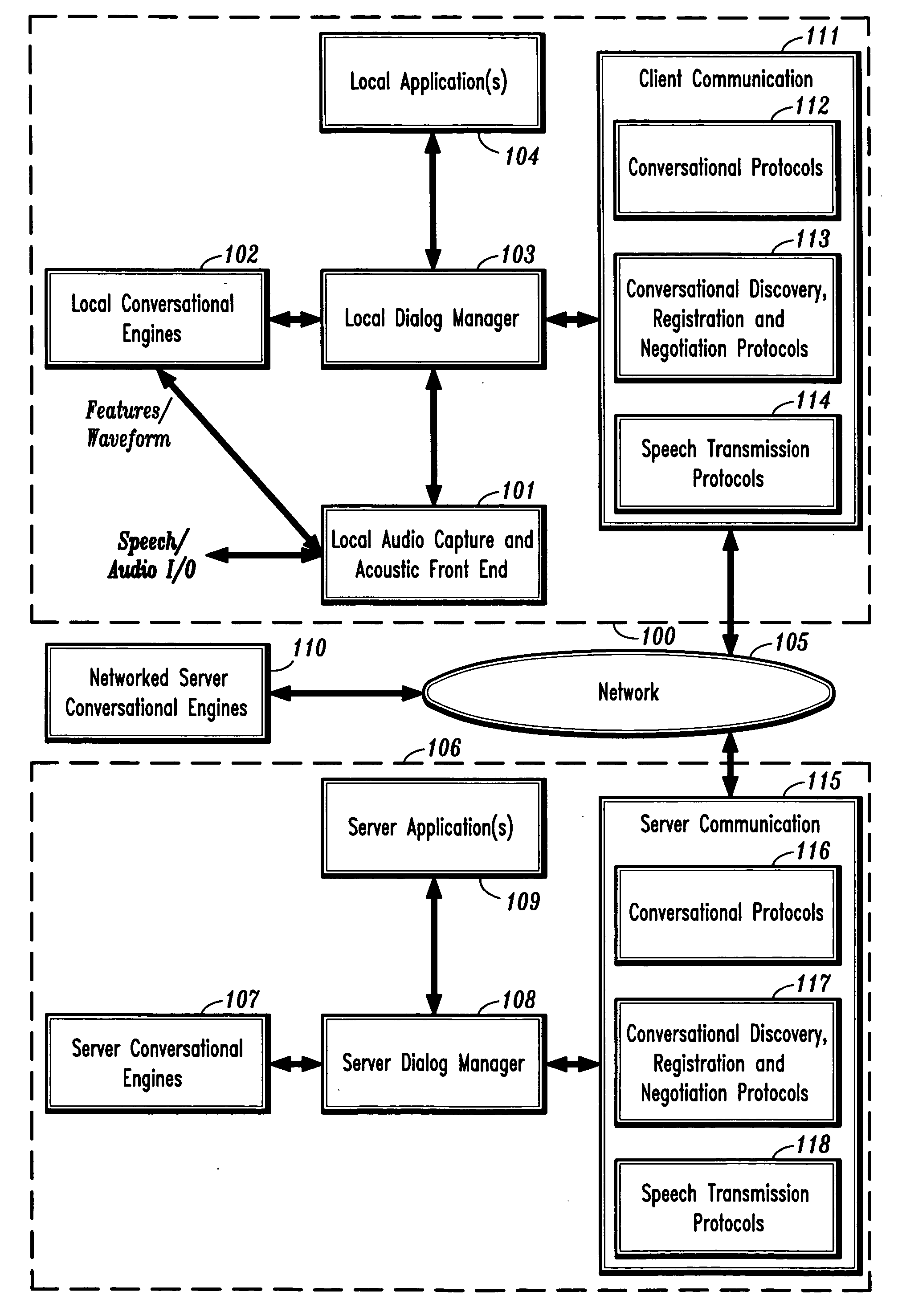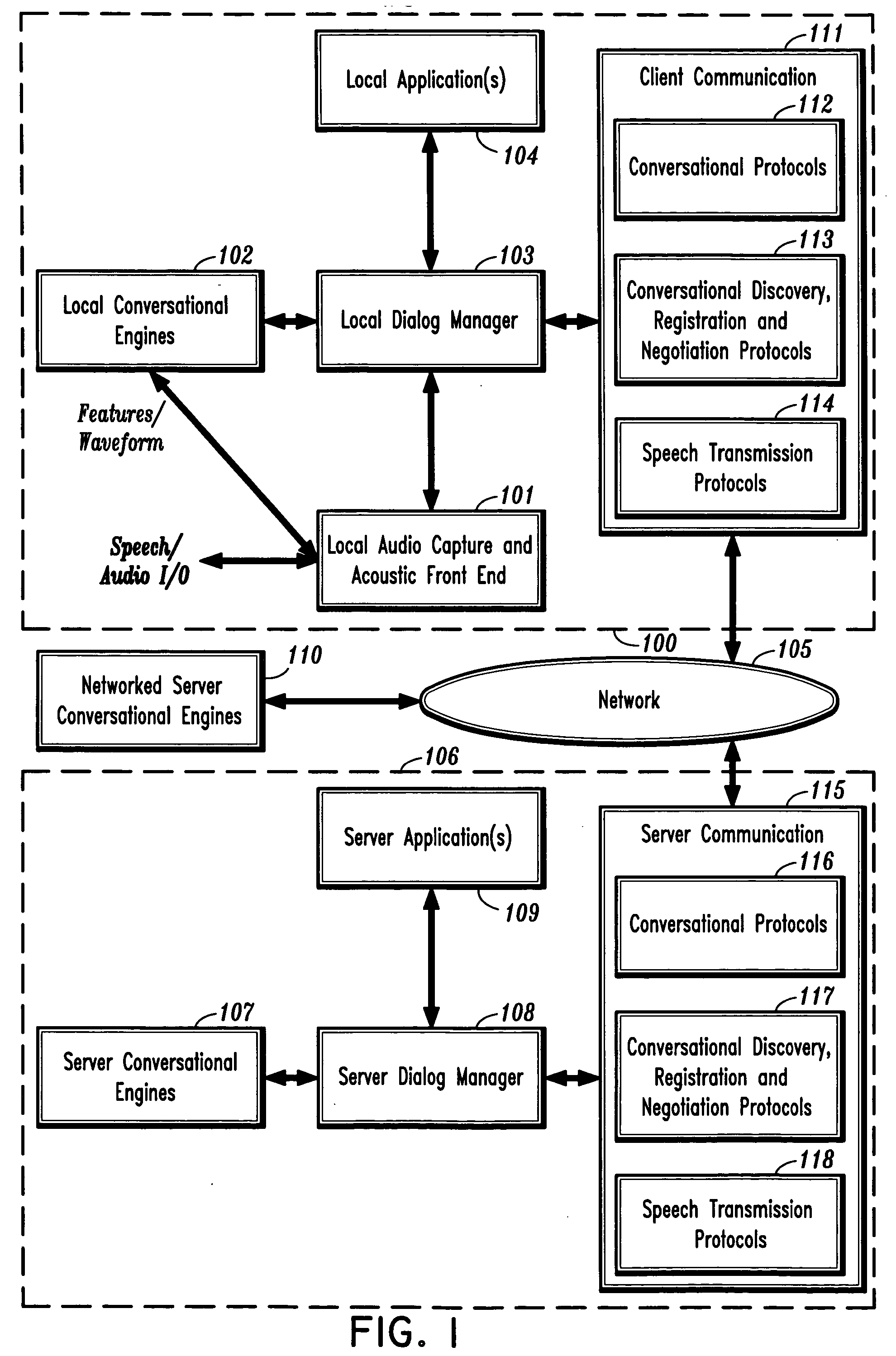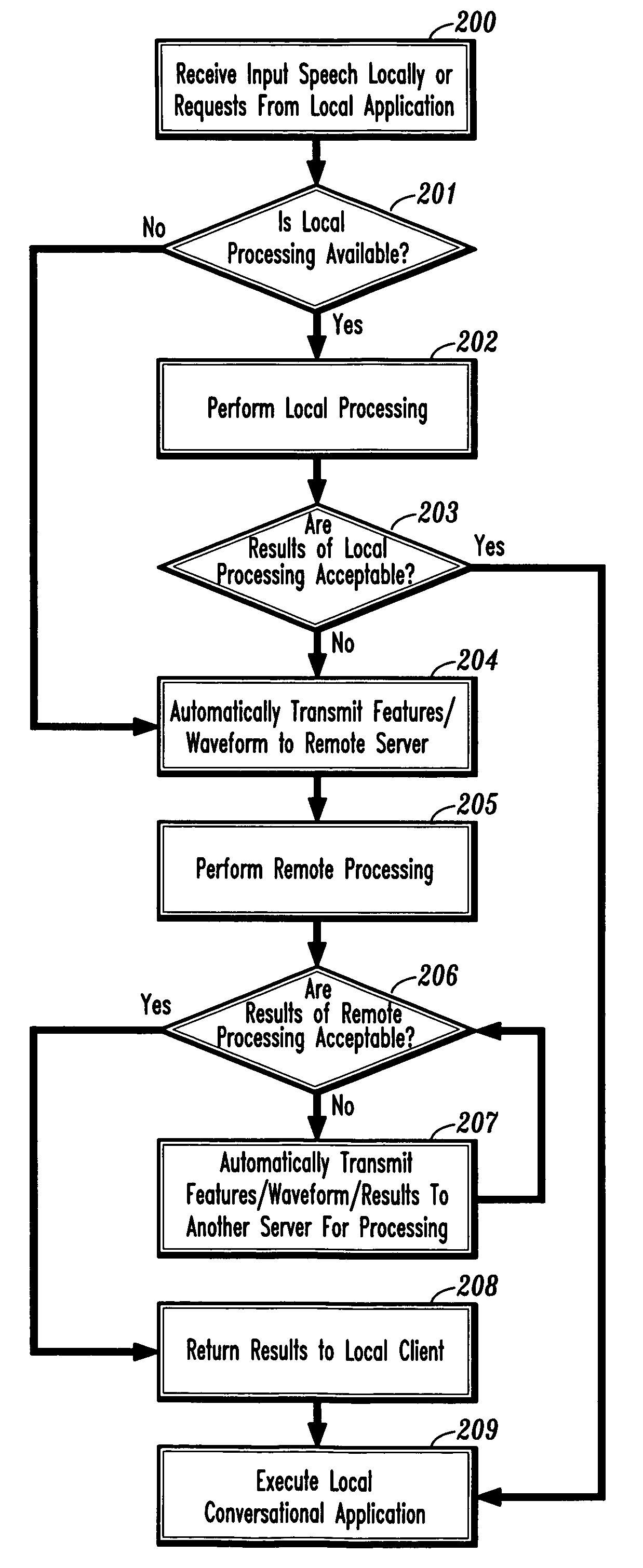System and method for providing network coordinated conversational services
a network-coordinated, conversational technology, applied in the field of conversational systems, can solve the problems of critical issue of user interface (ui), limited conventional conversational system (, o) and other problems, and achieve the effect of limited conversational resources, limited cpu, memory and power capabilities, and complex conversational capabilities
- Summary
- Abstract
- Description
- Claims
- Application Information
AI Technical Summary
Benefits of technology
Problems solved by technology
Method used
Image
Examples
Embodiment Construction
[0026] It is to be understood that the present invention may be implemented in various forms of hardware, software, firmware, special purpose processors, or a combination thereof. Preferably, the present invention is implemented in software as an application comprising program instructions that are tangibly embodied on a program storage device (e.g., magnetic floppy disk, RAM, CD ROM, ROM and Flash memory) and executable by any device or machine comprising suitable architecture such as one or more central processing units (CPU), a random access memory (RAM), and audio input / output (I / O) interface(s).
[0027] It is to be further understood that, because some of the constituent system components and method steps depicted in the accompanying Figures are preferably implemented in software, the actual connections between the system components (or the process steps) may differ depending upon the manner in which the present invention is programmed. Given the teachings herein, one of ordinar...
PUM
 Login to View More
Login to View More Abstract
Description
Claims
Application Information
 Login to View More
Login to View More - R&D
- Intellectual Property
- Life Sciences
- Materials
- Tech Scout
- Unparalleled Data Quality
- Higher Quality Content
- 60% Fewer Hallucinations
Browse by: Latest US Patents, China's latest patents, Technical Efficacy Thesaurus, Application Domain, Technology Topic, Popular Technical Reports.
© 2025 PatSnap. All rights reserved.Legal|Privacy policy|Modern Slavery Act Transparency Statement|Sitemap|About US| Contact US: help@patsnap.com



